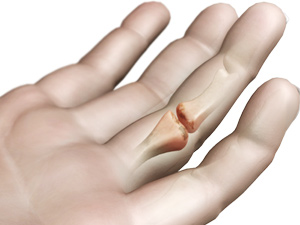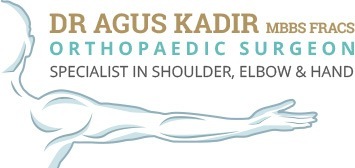Arthritis of the Hand (Digit Arthritis)

Arthritis is an inflammatory condition of the joints. Arthritis in the hand affects various joints in the hand and wrist, causing swelling, pain, stiffness and malformation, all of which can interfere with use of the hand and daily activities.
The ends of the bones within a joint are covered by a spongy tissue called cartilage, which is lubricated by synovial fluid. These help in the smooth, friction-free movement of the joints. Wear-and-tear or damage to these tissues can lead to arthritis. Traumatic injuries, fractures and joint dislocations make you more susceptible to developing arthritis.
There are several types of arthritis. The most common are:
- Osteoarthritis: Also called degenerative joint disease, osteoarthritis is the most common type of arthritis that occurs due to wear-and-tear that is associated with the aging process.
- Rheumatoid Arthritis: This is an auto-immune disease in which the body’s immune system attacks healthy joints, tissues and organs. Occurring most often in women, it inflames the synovium. Rheumatoid arthritis most commonly affects the joints of the hands and feet, and tends to be symmetrical (affecting the same joint on either side of the body, at the same time and with the same symptoms).
- Post-traumatic Arthritis: Arthritis developing after an injury to the hand or wrist is called post-traumatic arthritis. The condition may develop years after the trauma such as a fracture, severe sprain or ligament tears.
- Psoriatic Arthritis;: This form of arthritis may occur in patients suffering from psoriasis, a skin disorder characterized by inflamed, scaly skin lesions. It causes painful joints, stiffness and swelling and tends to flare up and then go into periods of remission.
Your doctor performs a thorough physical examination and orders X-ray imaging and bone scans of the hand to diagnose and ascertain the severity of arthritis.
Treatment may involve conservative measures or surgical repair. Nonsurgical treatment methods for relieving pain in an arthritic joint include pain and anti-inflammatory medications, use of splints and steroid injections. Surgery is usually considered if nonsurgical treatments fail to provide relief. There are different surgical procedures, usually performed through arthroscopy (minimally invasive surgery), and may include:
- Synovectomy: This surgery is usually indicated for early cases of inflammatory arthritis where there is significant swelling of the synovium (tissue lining the joint), causing pain or limiting the range of motion of the hand. It involves the removal of the inflamed synovium.
- Arthroplasty: In this procedure, your surgeon removes the affected joint and replaces it with artificial implants.
- Arthrodesis: A fusion, also called an arthrodesis involves removal of the damaged regions of the bones of a joint and then fusing the bones together, using metal wires or screws for support. This surgery is usually indicated when the joints are severely damaged, when there is limited mobility, damage to the surrounding ligaments and tendons, failed previous arthroplasty, and in young patients.
Your surgeon will discuss your options and help you decide which type of surgery is most appropriate for you.
Following surgery, a rehabilitation program involving physical therapy may help regain hand strength and movement. You may need to use a splint or cast for a while after surgery to protect the hand while it heals, and modify activities for a minimum of 12 weeks to let the joint reconstruction heal properly. You should be able to resume your normal activities in three months of surgery.
Other Hand & Wrist List
- Trigger Finger
- Scaphoid Fracture
- Dupuytren’s Contracture
- Arthritis of the Wrist
- Flexor Tendon Injuries
- Wrist Pain
- Ganglion (Cyst) of the Wrist
- Wrist Tumours
- Wrist Fracture
- Hand Fractures
- Ligament Injuries
- Tendinitis
- Tendon and Nerve Lacerations
- Normal Hand Anatomy
- Carpal Tunnel Syndrome
- Arthritis of the Thumb

 Menu
Menu






